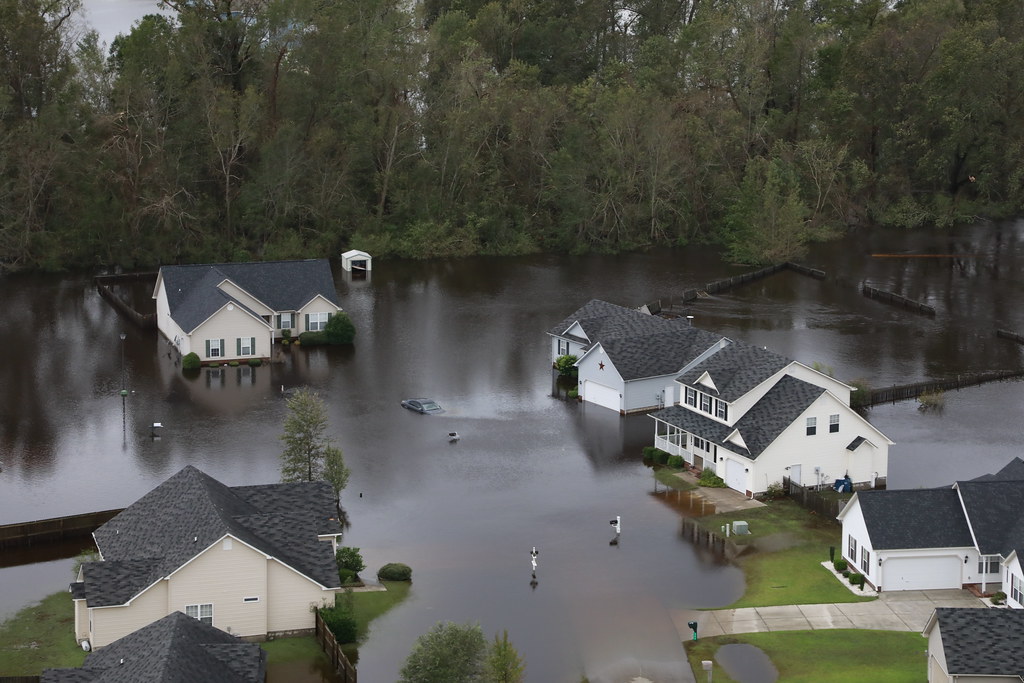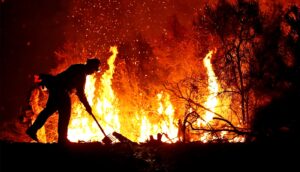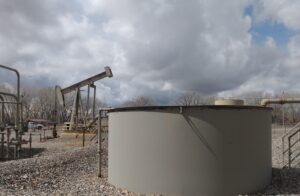The disaster recovery groups helping rural North Carolina weather COVID-19
5 min read
In the last four years, two major hurricanes have devastated communities in rural Robeson County, North Carolina. Cassandra Campbell has been there through both of them. The executive director of the Robeson County Disaster Recovery Coalition, Campbell leads the nonprofit in coordinating disaster relief efforts in the county. She says they have helped 11,000 people since Hurricane Florence in 2018.
This year, though, she’s been responding to a different kind of disaster: the coronavirus pandemic.
As of May 28, Robeson County had 713 confirmed COVID-19 cases and 13 deaths — some of the highest numbers in rural eastern parts of the state. Campbell, along with her staff and volunteers, have been busy distributing more than 3,000 N95 masks, gloves, and antibacterial wipes to residents in Robeson County. They’re also educating people on how to properly use personal protective equipment and sharing resources about the virus, which Campbell said has helped “flatten the curve to prevent or reduce the influx of hospitalizations that we are not equipped or prepared to handle in such a poor county.”
Now, she’s helping prepare the county for a potential hurricane during the pandemic. Scientists predict this year’s Atlantic hurricane season — which begins June 1 — will be an active one. Located along the border of South Carolina, Robeson County is the largest county geographically in North Carolina, as well as the second-poorest. According to Census data, more than a third of its residents identify as American Indian — the most of any county in the Southern U.S. — and a quarter are Black. Nearly a third of households live in poverty.
Many people are still picking up the pieces from Hurricane Matthew in 2016 — experiencing homelessness or living with extensive home damage — and the county is still waiting on funding from Hurricane Florence, said Stephanie Chavis, director of Robeson County Emergency Management. According to Robeson County government spokesperson Emily Jones, the county is also expected to receive over $2 million in funding to address the coronavirus pandemic, which will go towards “COVID-19 testing, PPE, cost for disinfection of public areas, [and] payroll expenses for public safety and healthcare employees.”
While the money trickles in, the coalition and other small nonprofits run by local folks are trying to fill in the gaps. “We still have people recovering from Matthew and now we have COVID-19 and this is something that really not North Carolina or anybody globally have been prepared for,” Campbell said.
Adrienne Kennedy was a single mother when Hurricane Matthew hit, dumping 20 inches of rain in Lumberton and flooding the Lumber River. Displaced from her home, Kennedy and her family had to be rescued from a hotel they were living in before heading back to Robeson County, where they bounced around relatives’ and friends’ homes for months.
At her childhood church on a Sunday afternoon in 2016, Kennedy met Shalonda Regan, who had also been displaced by the storm. Frustrated with how long relief efforts were taking, the two decided to organize their own. They set up food and clothing drives before eventually launching Seeds of H.O.P.E. (Holding On to Purpose Everyday). Two years later, when Hurricane Florence barreled through as a Category 4 storm, the group helped evacuate 85 people and distributed more than 300 signs for residents to signal for emergency responders. They also organized cleanup efforts after neighborhoods piled water-damaged belongings by the side of the road.
According to a government report, North Carolina spent only 1% of federal relief money by December 2018 because of “limited institutional knowledge within state government” for how to distribute community grants and design recovery programs. The report also revealed the state emergency management agency spent $3.7 million unnecessarily. As of late 2019, about $19.5 million of the $236.5 million given to North Carolina has been spent — more than a quarter of it in Robeson County.
These types of inefficiencies are why Kennedy and Regan say members of the community are the most equipped to lead on-the-ground disaster recovery efforts, rather than outside groups or government leaders. “If you looked at all sides of the track, there was inequity,” Kennedy said. “We would drive through neighborhoods and it was like, ‘Wow.’ They were selling our stories, but we were not reaping any of the benefits of our stories.”
Seeds of H.O.P.E. has since become a reliable and consistent advocate for the community — not just for disaster recovery, but also for other environmental and public health issues. They’ve organized against pipelines and other industrial projects. Regan said these issues directly overlap with preparing for disaster recovery. “When we were struck with disaster, people started to think about environmental stuff,” she said, but people “need to be concerned” all the time with clean air and water.
During the pandemic, Regan and Kennedy have advocated for residents whose power and water was disconnected, shopped for groceries for those confined to their homes, and distributed information about COVID-19. They said they are also working with churches to establish hubs across the county for sharing food and supplies.
Residents are looking to local nonprofits like Seeds of H.O.P.E. to support them, said Jean Love, a community organizer and town council member in Rowland. “These women find a way – every time – to do what they said they’re going to do,” she said. Kennedy wants Seeds of H.O.P.E. to become a community development center in order to address the issues of long-term economic development, homeownership, and affordable housing. But, she acknowledged, that would require more consistent funding.
The Robeson County Disaster Recovery Coalition is meeting weekly with other nonprofit organizations, schools, and emergency services to discuss coordinated hurricane preparedness strategies. “We have to prepare for the worst,” said Chavis, the emergency management director.
Jones, the Robeson County spokesperson, said the county plans to house fewer people in shelters and put six feet of distance between them. They may also use separate shelters for people 65 and older. The county will supply PPE and hand sanitizer and “make sure everyone wears it at all times,” she said, and officials are working to figure out how to keep people separated and disinfect public areas sufficiently. They plan to employ school and county custodial staff to do so, Jones said, and are sharing updated information via their Facebook page and website.
North Carolina is slated to receive $9.3 million from FEMA to assist nonprofits helping residents experiencing hunger and homelessness, and Chavis said Robeson County’s emergency management agency is also waiting on approval for more COVID-19 funding. “We know from the past this will be a long process,” Chavis said.
Campbell said she tries not to allow herself to get overwhelmed. “We know [the coronavirus] is not going away anytime soon,” she said. “It’s been hard for us the past few years but I feel confident that our county will make it through. We’re strong and you can see that with what we have been through in the past.”
In the meantime, strategic collaborations with other groups in the area are important. “We can’t always depend on local or government organizations for funding,” she said. “We’re doing the best we can to care for the people left behind in a disaster.”
Antionette Kerr is a media correspondent in North Carolina.
This story was supported by the Solutions Journalism Network.






